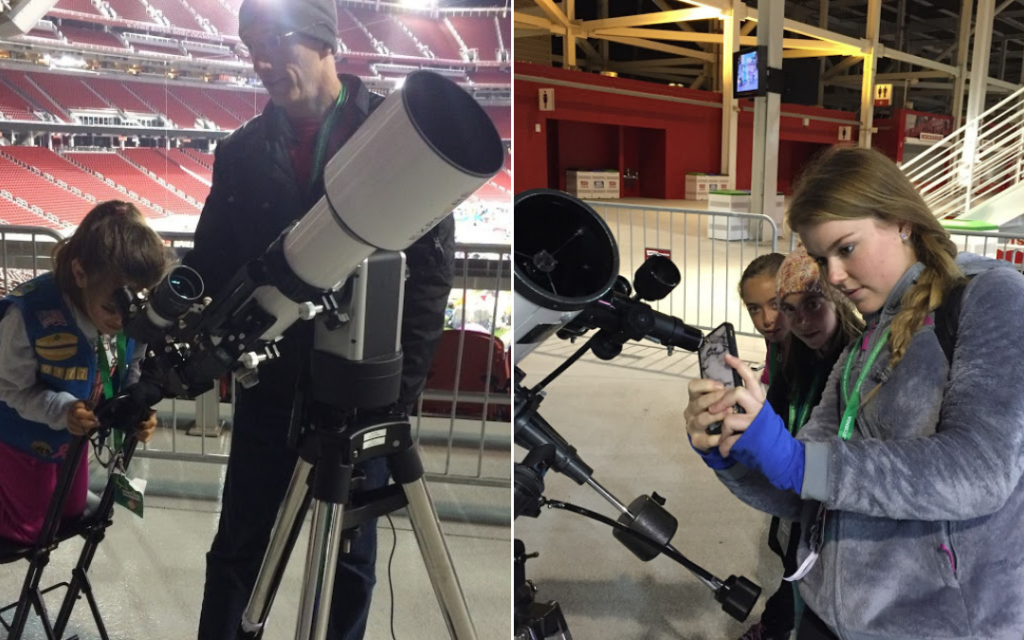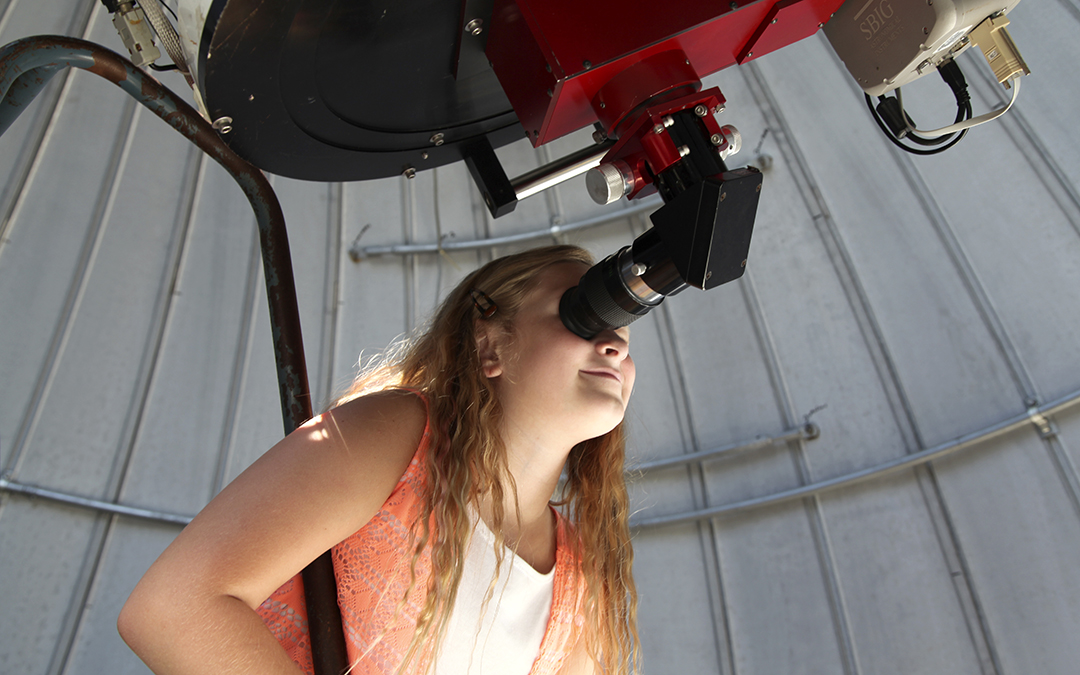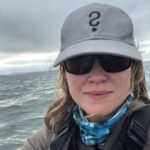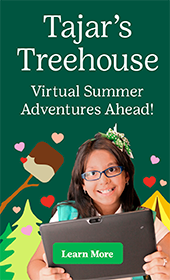Whether you’re gazing up at the twinkling stars from a blanket, peering at the rings of Saturn through a telescope, or marveling at images of distant galaxies taken by spacecraft, space sparks wonder and curiosity in everyone. Space science is also a beautiful hybrid of STEM and the outdoors, helping girls engage with our natural world on a grand scale.
In fall of 2018, GSUSA released the first three in a new series of Space Science badges, thanks to funding from a NASA cooperative agreement called Reaching for the Stars: NASA Science for Girl Scouts. The first three badges to be released were for Daisy, Brownie, and Junior levels. The older girl badges will be released in fall of 2019. The new Girl Scout Space Science badges don’t require any prior experience or expertise; they are designed for (and tested with) leaders and girls from all backgrounds. (Thank you to the hundreds of girls from our council who gave feedback on the badges over the past three years!)
Curious to learn more about these new Space Science badges, and hear from two of the experts who helped make them a reality? On Thursday, January 17, GSNorCal offered a STEM Webinar on the new Space Science badges with Pamela Harman, Girl Scout Stars’ Principle Investigator (lead) and Director of the Center for Education at SETI Institute and Suzanne Gurton with the National Radio Astronomy Observatory. The webinar covers the badges in detail, along with helpful tips and activity extensions. If you missed the webinar, we encourage you to check out the inspirational recording and related resources on the GSNorCal training portal.
Prepare to Launch
The Daisy Space Science Explorer badge is designed to take two 90-minute meetings. To earn the badge, girls complete one (of two) activity choices from each of three badge steps. The Brownie Space Science Adventurer and Junior Space Science Investigator badges are designed to take three 90-minute meetings. To earn the badge, girls complete one (of three) activity choices from each of five badge steps. While the badges can be completed using the badge booklets alone (available from the store for $2.50/booklet or $0.99/PDF download), we strongly encourage leaders to check out the many useful resources available on the Volunteer Toolkit. Resources include meeting scripts, fact sheets, printable worksheets, and helpful links.

Down to Earth & Stellar Tips
The badges include a wonderful mix of hands-on, indoor, outdoor, and online activities. While every activity offers a chance for girls to build STEM interest, confidence, and competence, some are particularly wonderful for camping, summer camps, larger events, and connecting with local enthusiasts. When you are planning your meetings, the following are some additional things to consider:
Daytime Activities
- Before starting any outdoor space science activity, remind your girls about sun safety. Looking directly at the sun without a safe filter (like certified “eclipse glasses”) can cause permanent damage—which you may not notice or feel—in just a moment. Remind your girls to look at other places in the sky, or at their shadows. Never look directly at the sun.
- For shadow-based activities, head outside on a clear, sunny day. Choose a time when the sun is neither too high (midday), nor too low (sunrise/sunset) in the sky. A low sun makes for very long shadows. Try looking up a time when the moon will be visible during the day, then have girls compare the shadows on “moon balls” (white foam balls on sticks) with the visible moon.
Nighttime Stargazing
- Be prepared by first heading online to look up:
- “Astronomical sunset”: With younger girls and earlier bedtimes, you may want to plan your night sky viewing in late fall or early spring.
- The moon phase, along with rise and set times. The surface features of the full moon are most impressive one day before and after the official full moon. For dark sky viewing of the Milky Way or faint objects through telescopes, choose a time when the moon is less bright, or not in the sky (as well as a location with as little light pollution as possible!). We like to plan stargazing parties between the third and first quarter moons (from about a week before until a week after the new moon).
- Remember to pack flashlights or headlamps with red lights or filters. Red light helps your eyes stay “dark adapted” for optimal star gazing.
- Bring lots of warm clothes, a comfy spot to recline (we suggest a tarp for the ground and cozy blankets to wrap around stargazers), and a thermos with a hot beverage. It’s beautiful out there, but sitting still can get chilly!
- Attend a star party! These gatherings of astronomy enthusiasts both fulfill one or more badge requirements and are a fun way to introduce your girls to the joy of astronomy. If you have a smaller troop or group, find an existing event or star party. Look up your local astronomy club through the Night Sky Network (NSN) club & event listings. The members are well-equipped with telescopes, knowledge, and enthusiasm for space, and would love to share it with your girls. If you have a larger group, reach out to your local NSN club and plan a star party with them!
What to do next:
- Visit GSNorcal’s Space page for additional space science resources, field trip ideas, and older girl opportunities like Girl Scout astronomy clubs and Destinations.
- There are more STEM webinars and events on the horizon! Check out the GSNorCal Activity Finder and register today!
Jessica Henricks— Jessica is a STEM Program Manager for Girl Scouts of Northern California, where she develops and supports NASA-funded Girl Scout Stars space science programs and STEAM experiences. She fondly remembers sleeping outdoors for the first time at Girl Scout Camp Hidden Falls. Before joining Girl Scouts, Jessica created resources, media, and events with organizations like the Exploratorium and Maker Media. In her spare time, she enjoys tinkering in the workshop or going for a paddle on the bay.

Elspeth Kersh—Elspeth is a STEM Program Manager for Girl Scouts of Northern California, where she develops and supports all kinds of STEM experiences for girls. Before joining the Girl Scouts, Elspeth worked as an educator at the Lawrence Hall of Science and the Oakland Zoo. When she is not at the Girl Scouts office in Alameda, she can be found fishing with her husband, trying new recipes, and singing silly camp songs.


